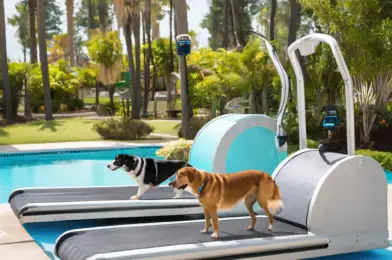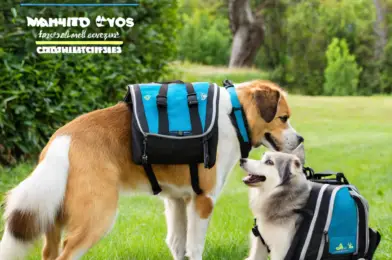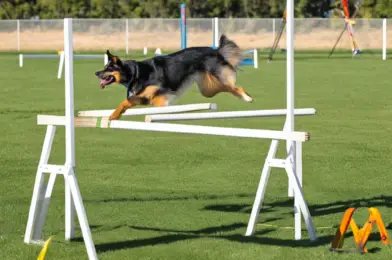When it comes to keeping our furry friends healthy and happy, exercise is just as crucial for dogs as it is for us humans. Regular physical activity not only keeps them fit but also prevents obesity and related health issues. As a responsible dog owner, you might be pondering the advantages of indoor versus outdoor exercise equipment to cater to your dog’s fitness needs. This comparison will explore the benefits and considerations of both options, providing you with a comprehensive understanding of how to make your dog’s exercise routine stimulating and enjoyable.
**Indoor Dog Exercise Equipment:**
In today’s urban lifestyles, indoor exercise equipment has become a popular choice for pet parents, offering convenience and consistency. One of the most common and beloved choices is the dog treadmill. These specially designed treadmills are a great way to provide a controlled and safe environment for your dog to get their cardio workout, especially during inclement weather or late-night hours. Dog treadmills come in various sizes and types, ensuring a tailored experience for small puppies to large dogs. The adjustable speed settings allow you to challenge your dog at a comfortable pace, building their endurance gradually. For those with limited space, foldable and compact models can be easily stored when not in use. Additionally, interactive toys and games, such as puzzle feeders or treat-dispensing balls, engage your dog’s mind and body, promoting mental stimulation and physical activity simultaneously. These toys encourage natural behaviors like foraging and hunting, keeping your dog entertained and active even when indoors.
**Outdoor Exercise Gear:**
The great outdoors is a natural playground for dogs, offering a stimulating environment for exercise and exploration. A simple walk or run with your dog is an excellent form of exercise, but outdoor gear can enhance these activities. For swimming enthusiasts, a life jacket can be a wonderful investment, allowing your dog to safely enjoy water activities and providing a full-body workout while building confidence in the water. For adventurous dogs, a dog backpack lets them carry their essentials and provides resistance for a more intense workout. Considering the terrain is crucial; a durable, all-terrain leash is essential for hiking or running on varying landscapes. The right leash offers control and safety, while retractable options provide freedom to explore, ensuring a comfortable and secure experience.
**Benefits and Considerations:**
Both indoor and outdoor exercise equipment have their merits. Indoor options offer convenience and consistency, ensuring your dog stays active regardless of the weather. Outdoor gear, on the other hand, provides a natural and stimulating environment that engages your dog’s senses. However, outdoor activities might be weather-dependent and require more planning and safety considerations. Combining both approaches ensures your dog’s exercise routine remains varied and exciting. Utilizing indoor equipment during bad weather and outdoor adventures on sunny days promotes a healthy balance, catering to both physical and mental well-being.
In the end, the choice between indoor and outdoor dog exercise equipment depends on your dog’s preferences, your lifestyle, and the activities you enjoy doing together. By incorporating a mix of these tools, you can create a fun and comprehensive exercise routine that strengthens your bond with your furry companion. So, whether it’s a treadmill session on a rainy day or a hike in the woods, your dog’s fitness journey will be a fulfilling and enjoyable experience.










